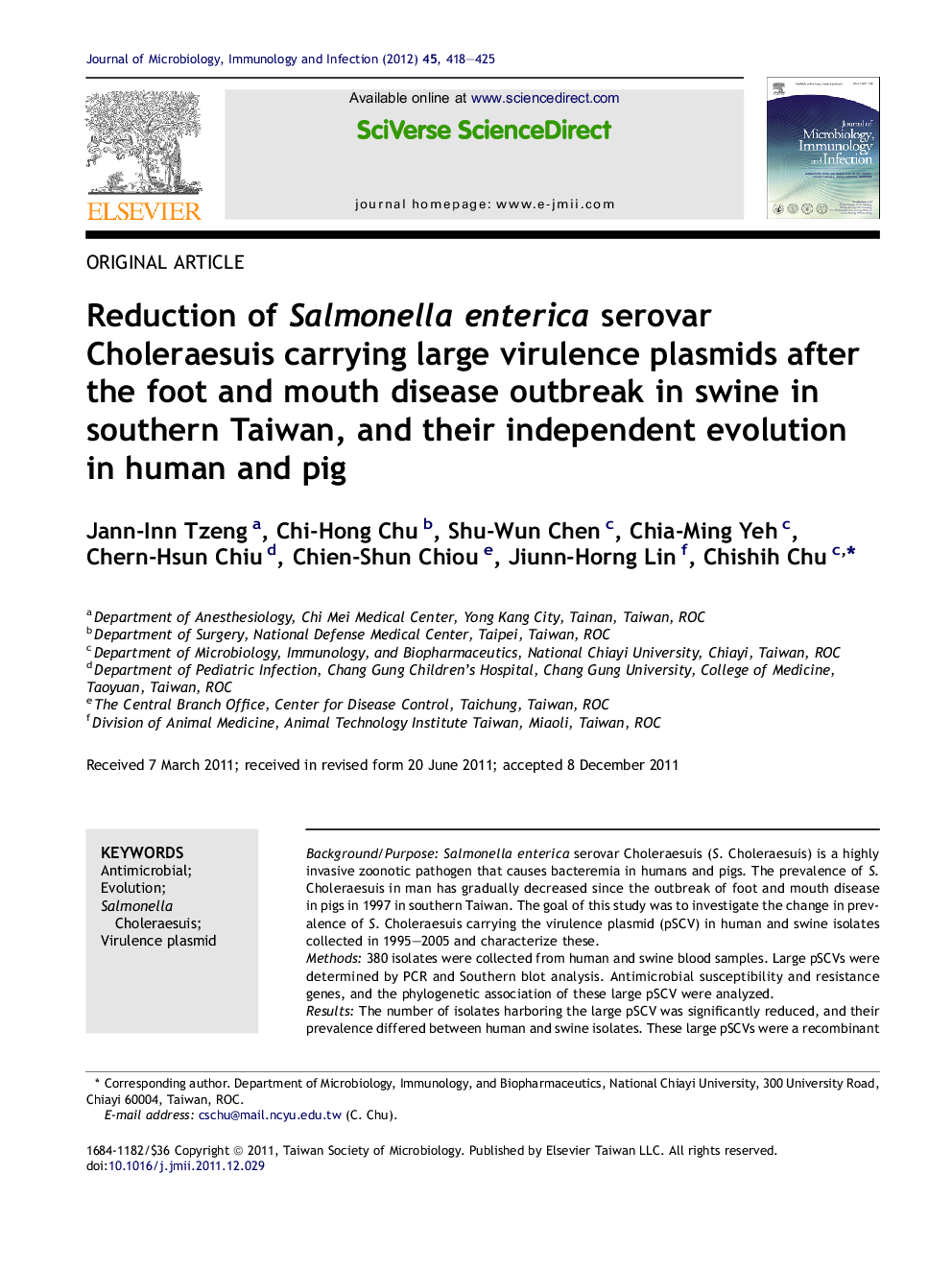| Article ID | Journal | Published Year | Pages | File Type |
|---|---|---|---|---|
| 3378159 | Journal of Microbiology, Immunology and Infection | 2012 | 8 Pages |
Background/PurposeSalmonella enterica serovar Choleraesuis (S. Choleraesuis) is a highly invasive zoonotic pathogen that causes bacteremia in humans and pigs. The prevalence of S. Choleraesuis in man has gradually decreased since the outbreak of foot and mouth disease in pigs in 1997 in southern Taiwan. The goal of this study was to investigate the change in prevalence of S. Choleraesuis carrying the virulence plasmid (pSCV) in human and swine isolates collected in 1995–2005 and characterize these.Methods380 isolates were collected from human and swine blood samples. Large pSCVs were determined by PCR and Southern blot analysis. Antimicrobial susceptibility and resistance genes, and the phylogenetic association of these large pSCV were analyzed.ResultsThe number of isolates harboring the large pSCV was significantly reduced, and their prevalence differed between human and swine isolates. These large pSCVs were a recombinant of original 50-kb pSCV and R plasmid. In addition, some large pSCVs lacked two pSCV-specific deletion regions from pef to repC and from traT to samA. These large pSCVs carried the resistance genes blaTEM,aadA2, and sulI, as well as class I integrons of 0.65 and/or 1.9 kb in size, but were inconjugatible. Phylogenetic analysis demonstrated that the large pSCV evolves independently in human and swine isolates.ConclusionS. Choleraesuis with large pSCV was significantly reduced after the foot and mouth disease outbreak and may evolve in human and swine specific isolates.
